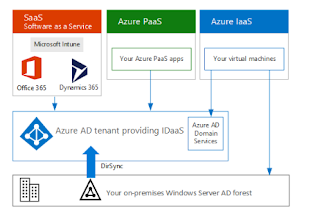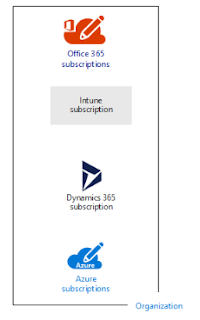Microsoft 365 Cloud Offerings - Subscription & Licenses - Part 2

Part 1 - Recap An organization identified by its public domain name. An organization can have multiple subscriptions A subscription can have multiple licenses Licenses can be assigned to individual user accounts User accounts are stored in an Azure AD tenant Active Directory Domain Service IDaaS (Identity As a Service) Multiple Microsoft cloud offering subscriptions can use the same Azure AD tenant that acts as a common identity provider. A central Azure AD tenant that contains the synchronized accounts of your on-premises AD DS provides cloud-based Identity as a Service (IDaaS) for your organization. Below diagram shows how a common Azure AD tenant is used by Microsoft's SaaS cloud offerings, Azure PaaS apps, and virtual machines in Azure IaaS that use Azure AD Domain Services. Azure AD Connect synchronizes the on-premises AD DS forest with the Azure AD ten...

